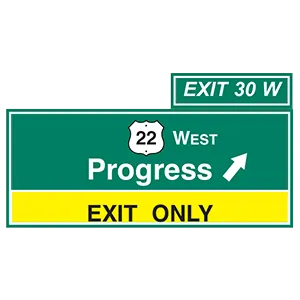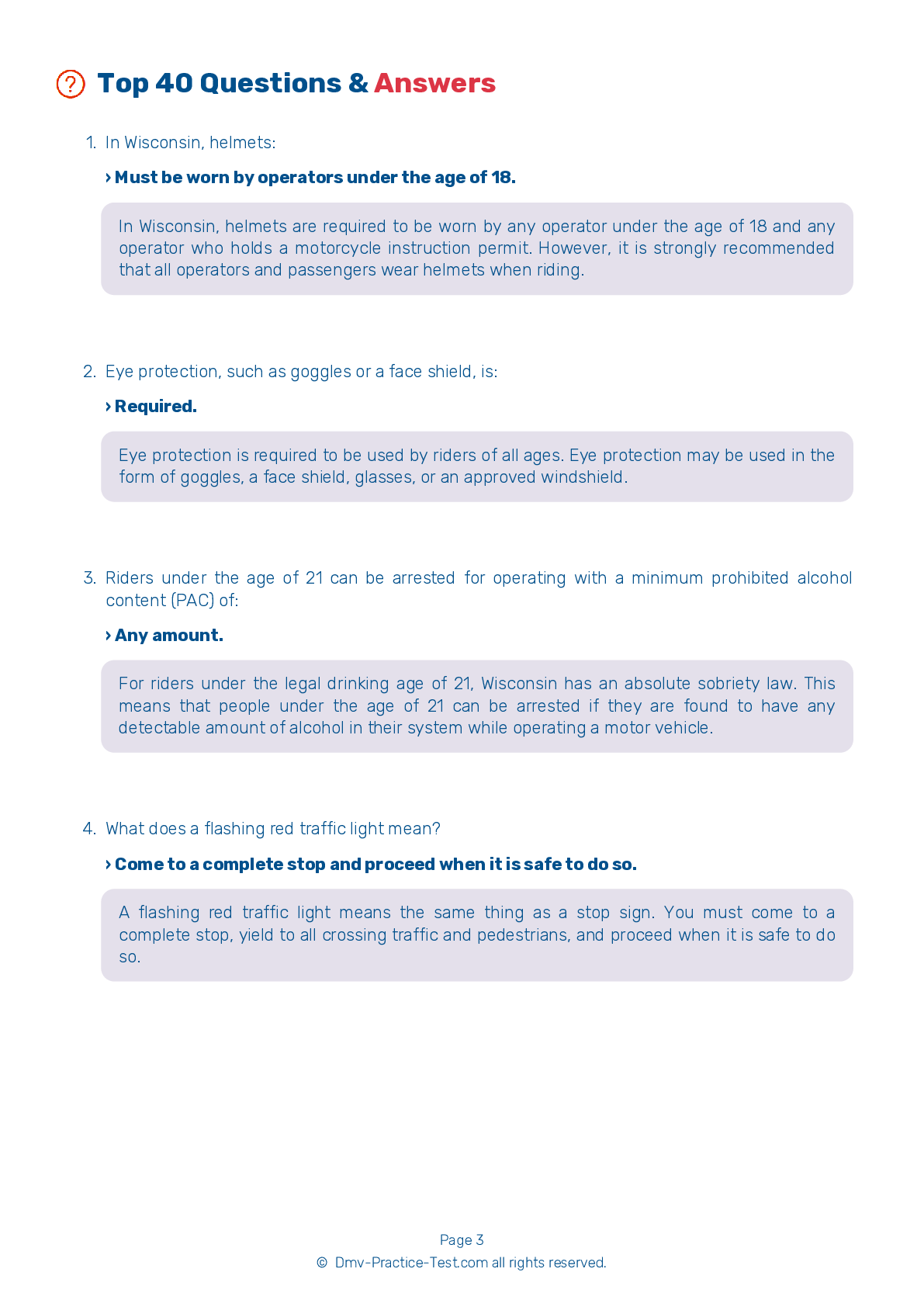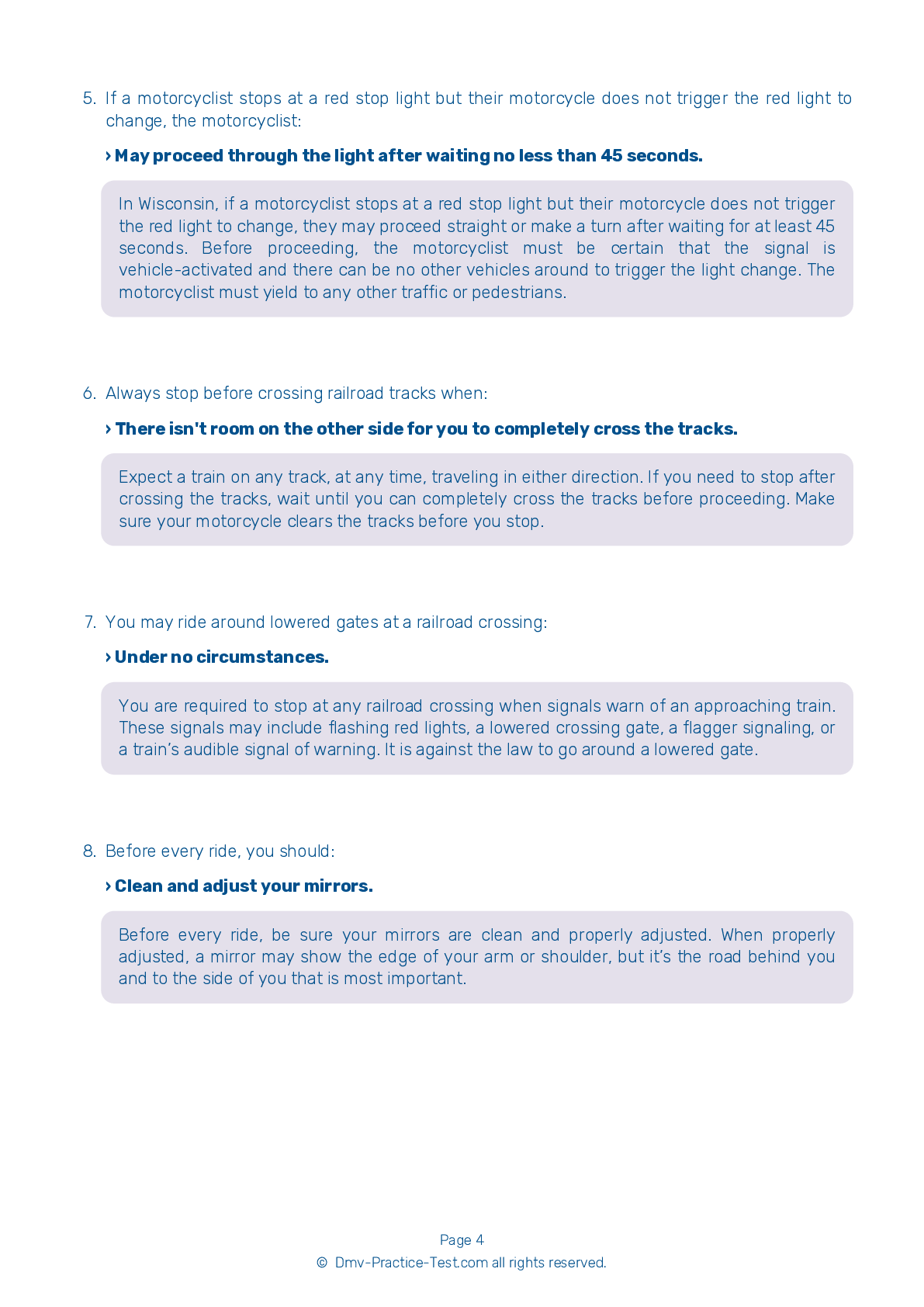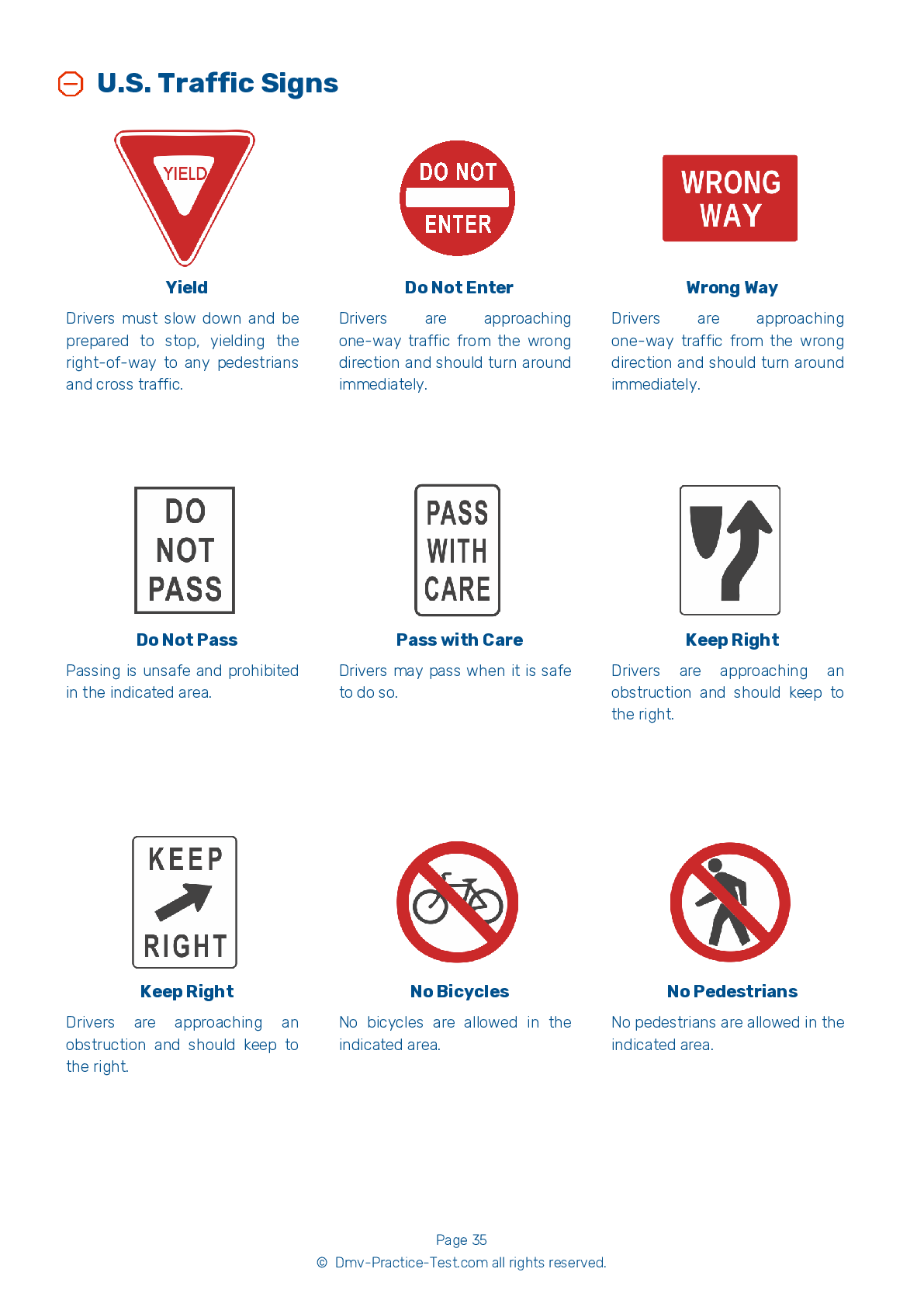Motorcycle Test | License WI 2025 | FREE Online Practice! #2 Page 2 of 5
Take this FREE motorcycle test (license in WI 2025) to check your knowledge of the road rules. To improve your results, download a motorcycle handbook online, study theory, and practice for free on our website. Still worried about how to get a motorcycle license in Wisconsin in 2025? Check our website for more sample tests, train as much as possible, and boost your grades!
9 . If you see this sign above your lane, you:

If a yellow panel with the message "Exit only" is on a highway sign, the lane below the sign will not continue through the interchange. Instead, the lane will go off of the roadway to form a ramp. If you are in a lane directly under an "Exit only" sign, you may change lanes to move through the interchange or you must exit the highway.
10 . Which of the following is not a benefit of riding in a close group?
Riding in close ranks is recommended over riding in a group that is spread out because the group will take up less space on the road, be easier for others to see, and be less likely to get separated at traffic lights and during passes.
11 . If a motorcyclist stops at a red stop light but their motorcycle does not trigger the red light to change, the motorcyclist:
In Wisconsin, if a motorcyclist stops at a red stop light but their motorcycle does not trigger the red light to change, they may proceed straight or make a turn after waiting for at least 45 seconds. Before proceeding, the motorcyclist must be certain that the signal is vehicle-activated and there can be no other vehicles around to trigger the light change. The motorcyclist must yield to any other traffic or pedestrians.
12 . If you lock the rear tire on a good traction surface, you should:
If you accidentally lock the rear brake on a good traction surface, you can keep it locked until you have completely stopped. You should still be able to steer your motorcycle with a locked rear wheel.
13 . To lessen your chances of being involved in a crash, you should:
To reduce the risk of being involved in a crash, you should always ensure that you are visible to others. Communicate your intentions through proper use of your signals, brake light, and lane position. Maintain a space cushion around your motorcycle and consistently scan the road ahead of, behind, and next to your vehicle.
14 . When riding in a group, inexperienced riders should be placed:
Inexperienced riders should ride near the front of a group, just behind the leader, so more experienced riders can keep an eye on them from behind.
15 . The oily strip down the center of a lane:
While the center strip of the road can be oily, it usually provides enough traction for safe riding, unless it is raining. The oily strip is usually no more than two feet wide, so motorcyclists can generally ride on either side of the strip and still be in the center portion of the lane.
See the exact questions that will be on the 2025 Wisconsin DMV exam.
99.2% of people who use the cheat sheet pass the FIRST TIME
Jeneen was tired of paying $5/gallon. She got herself a scooter that required the motorcycle license. She studyed the motorcycle test cheat sheet and passed her test the next day!
Christopher tells us how he knew nothing prior to obtaining the motorcycle study guide, and he only got one question wrong because he clicked on the wrong answer by mistake.



